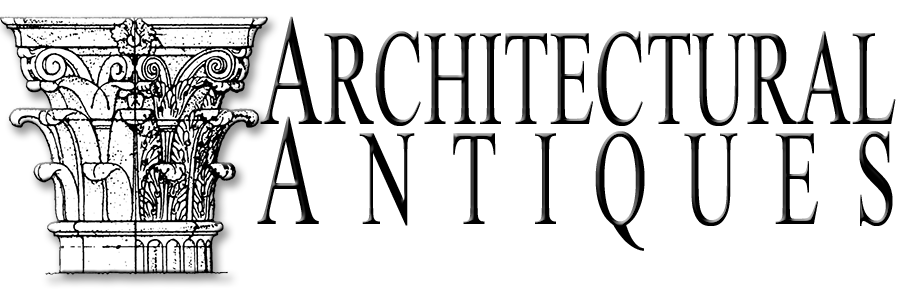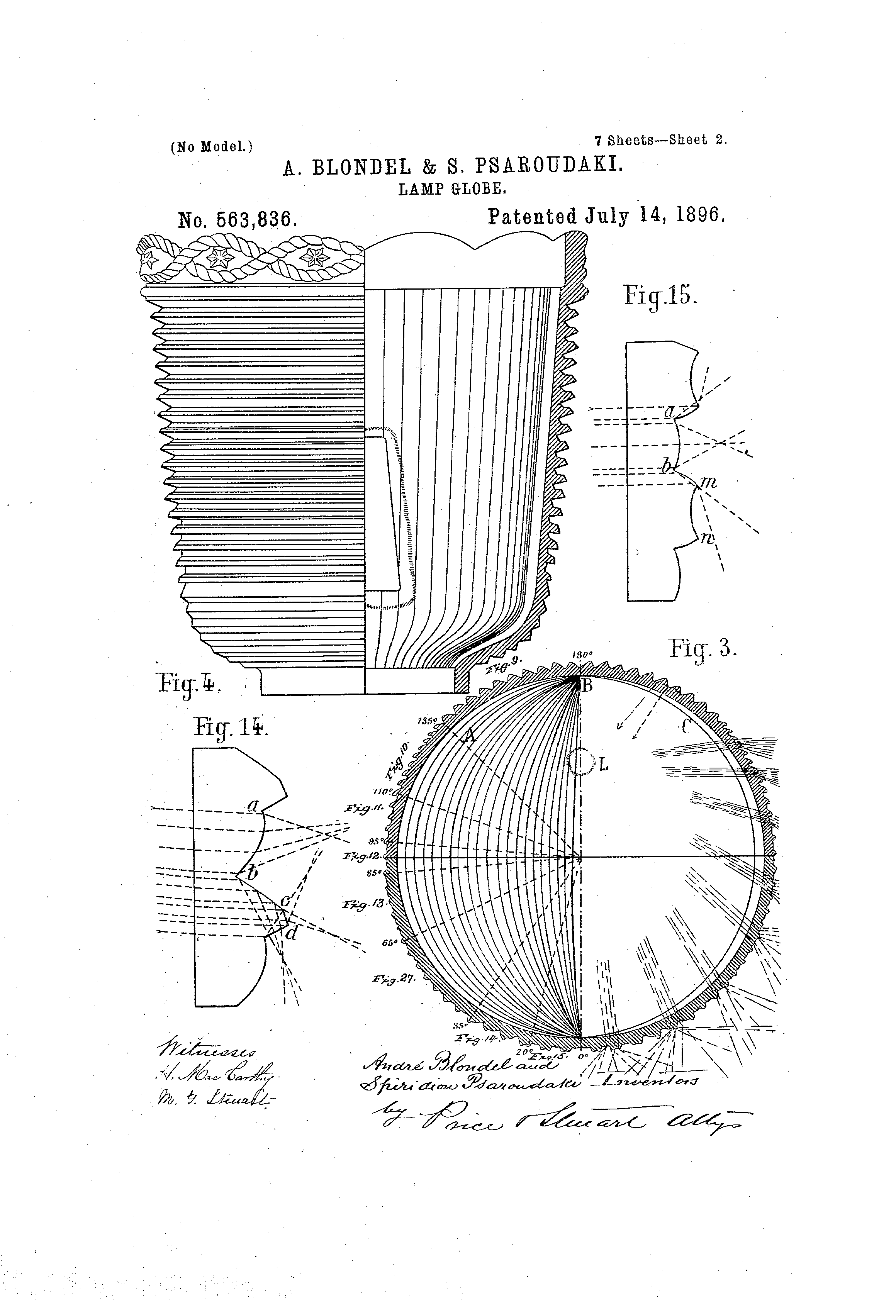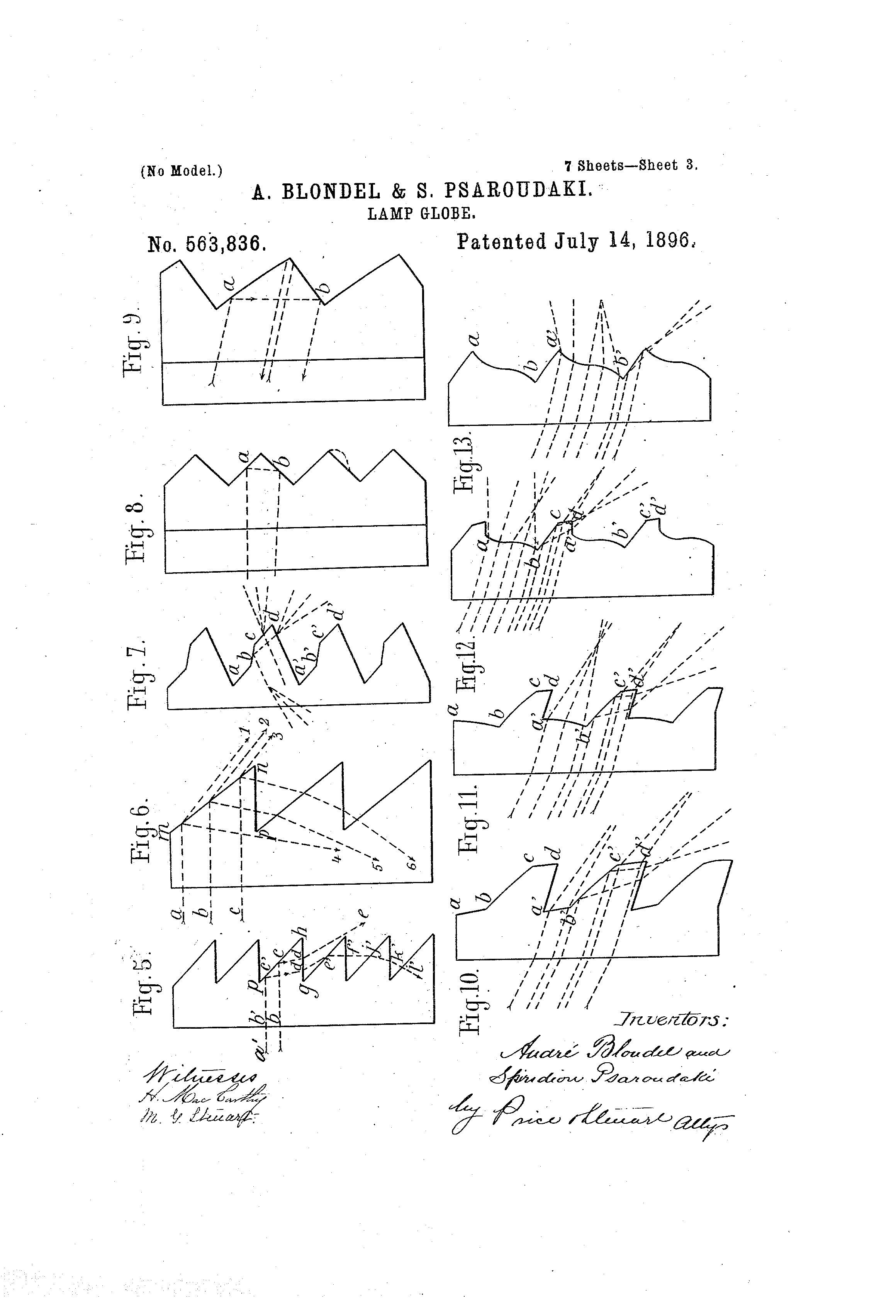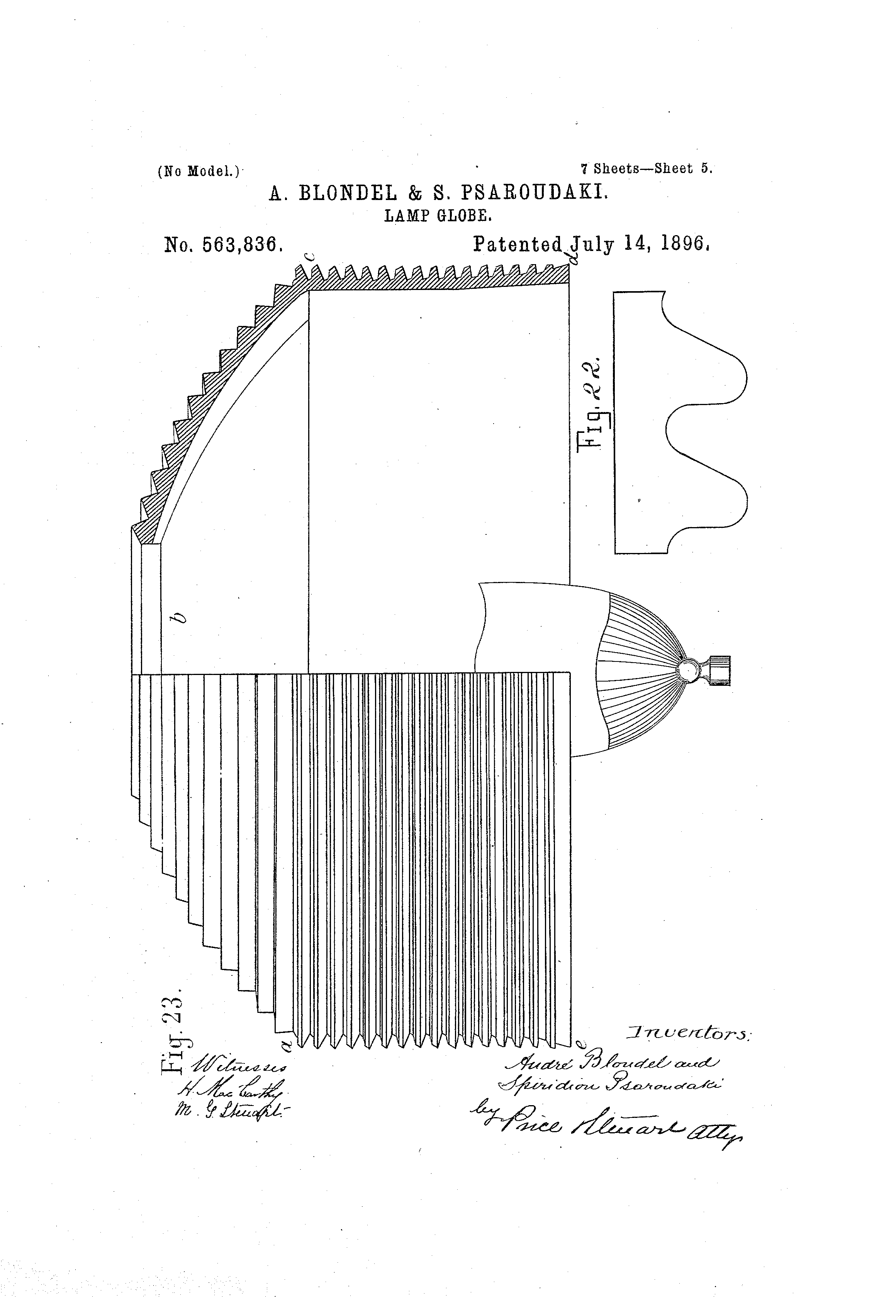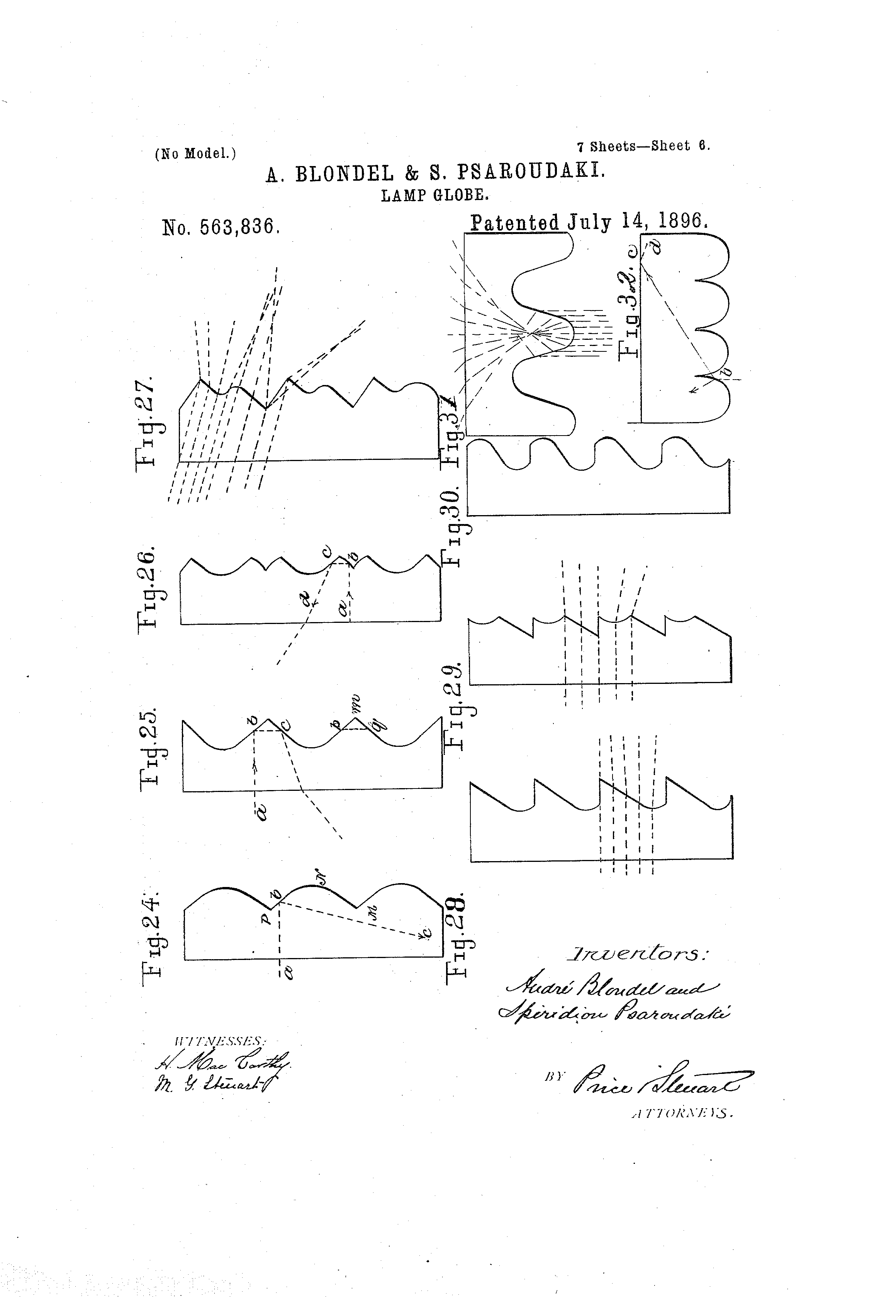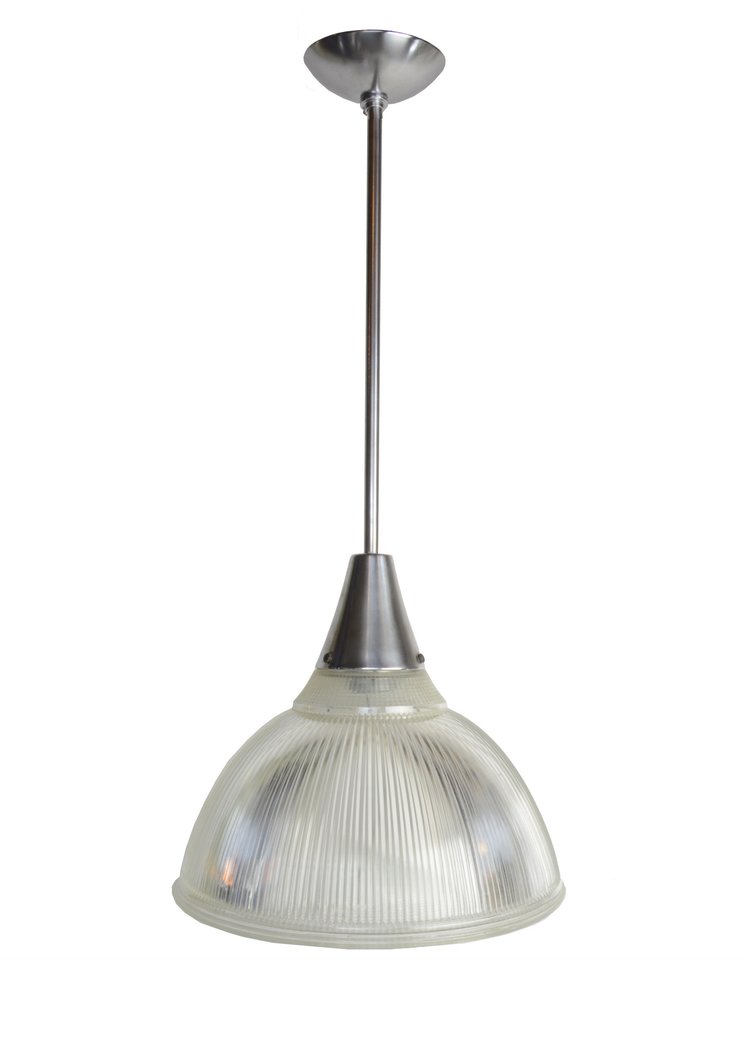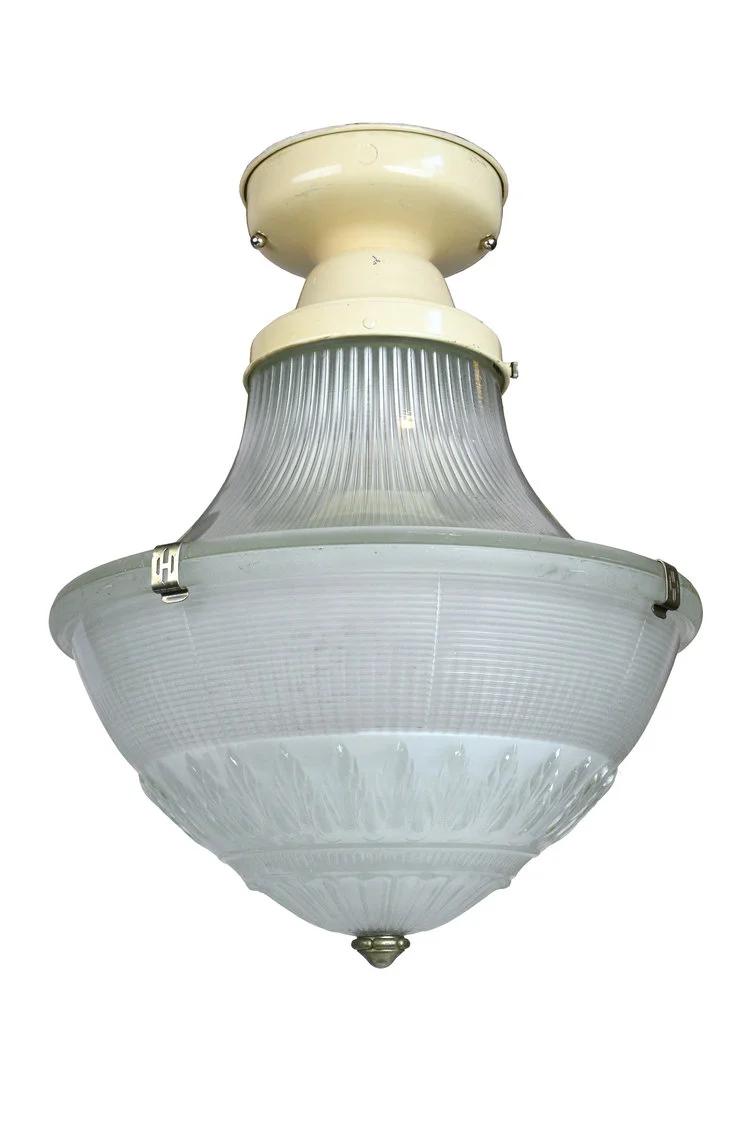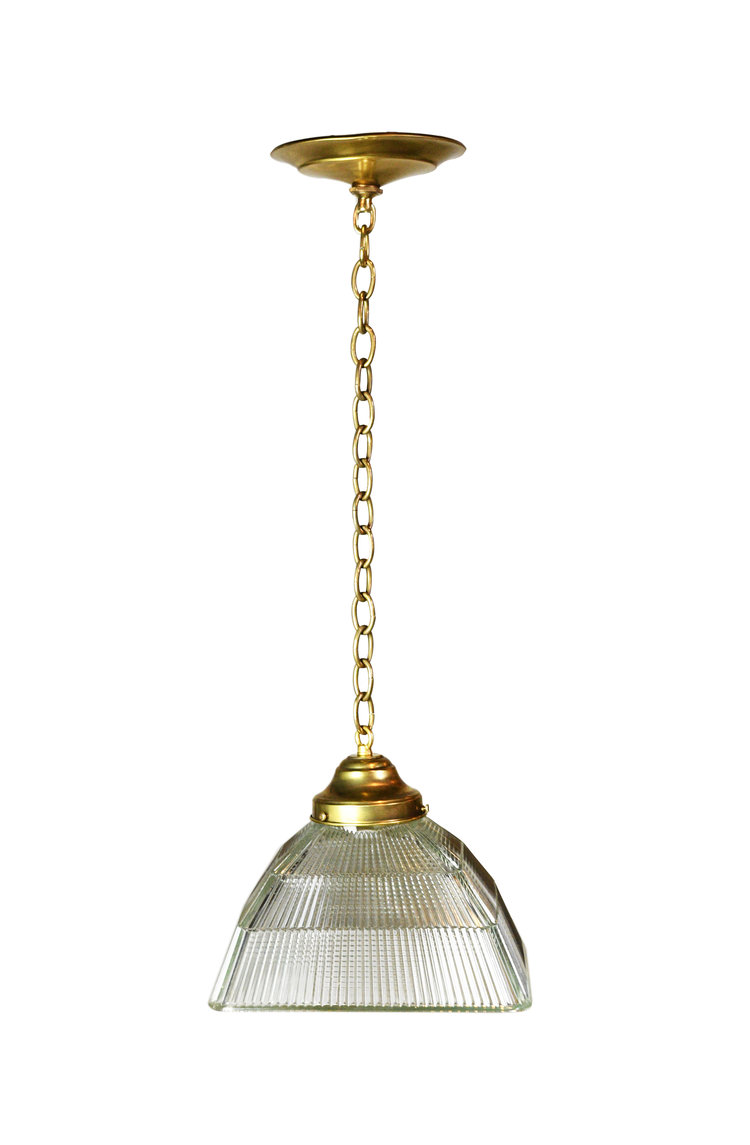"Great Beauty As Well As Illuminating Power": The Story of Holophane Lighting
/Holophane
trademark | ho•lo•phane | \hoh-luh-feyn\
The word holophane stems from the Greek words Holos (whole or entire) and Phanein (to appear or to seem). Put together, holophane means "to appear completely luminous."
When Andre Blondel, a French scientist, and Spiridion Psaroudaki, a Turkish engineer, submitted the documentation for what would be filed as U.S. Patent #563,836 in 1896 (see above pictures), it is unlikely they could have predicted that their holophane lights would "diffuse" into our lives just as well as they diffused light. This style of lighting, characterized by the use of parallel or crosscut prisms to refract and reflect light, can be seen everywhere from the domestic sphere to industrial spaces. Its popularity stems from the way that the light refraction creates a more luminous light source with less glare, creating a more efficient kind of illumination that can be directed where the light is needed most. Their design is also optimized to reduce light depreciation due to dirt, so you don't have to clean them as often to maintain the same level of brightness!
These diagrams show how light is refracted and reflected using different angles and shapes. Figures 5, 7, and 9 demonstrate the efficiency of holophane lighting, where light is refracted, reflected, and diffused, respectively.
From Blondel and Psaroudaki, the rights to manufacture and sell holophane glassware in the United States made their way to Otis Mygatt, a New York businessman, who founded Holophane Glass Company and transferred the rights a final time to the company itself. In the next 100 years the company and holophane lighting took off, and found their way into some quite prestigious places!
1904 - On display at the St. Louis World's Fair
1945 - By this time, holophane lighting is used in the Library of Congress (above), the Senate, and Congress
1936 - Used as supplemental lighting in Westminster Abbey for the coronation of King George VI
1953 - Used as supplemental lighting in Westminster Abbey for the coronation of Queen Elizabeth II
WWII - Presented with the Army-Navy "E" Award for Excellence in War Production
1970s - Found in airports, on highways, in tunnels...wherever light is needed over a large area!
Within the domestic sphere, holophane lighting has seen a bit of a resurgence with the popularity of more industrial-style kitchens and vintage-inspired living spaces. Holophane lighting is perfect for casting optimal illumination across your space in a way that is not harsh or dull. Whether providing illumination over culinary creations in the kitchen or late-night work in your home office, holophane is an excellent choice! Here at Architectural Antiques, we have several different designs available to fit the style you're looking for.
